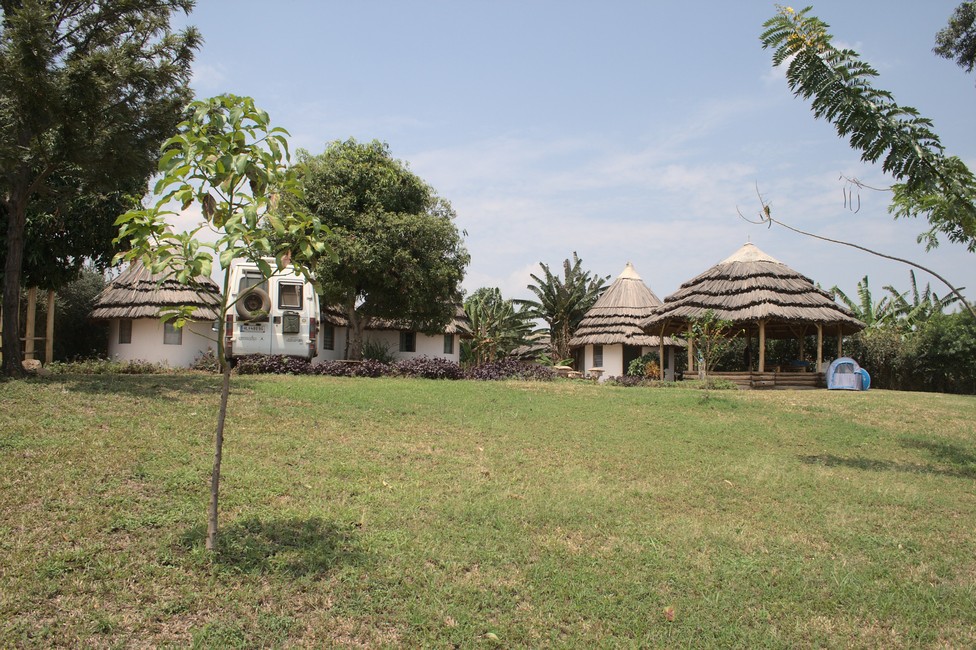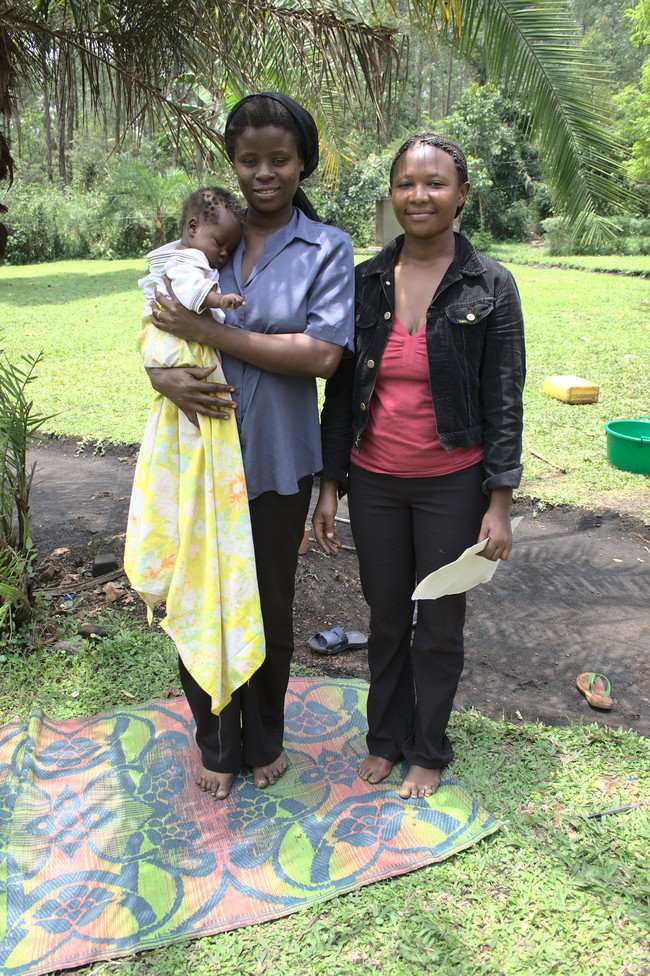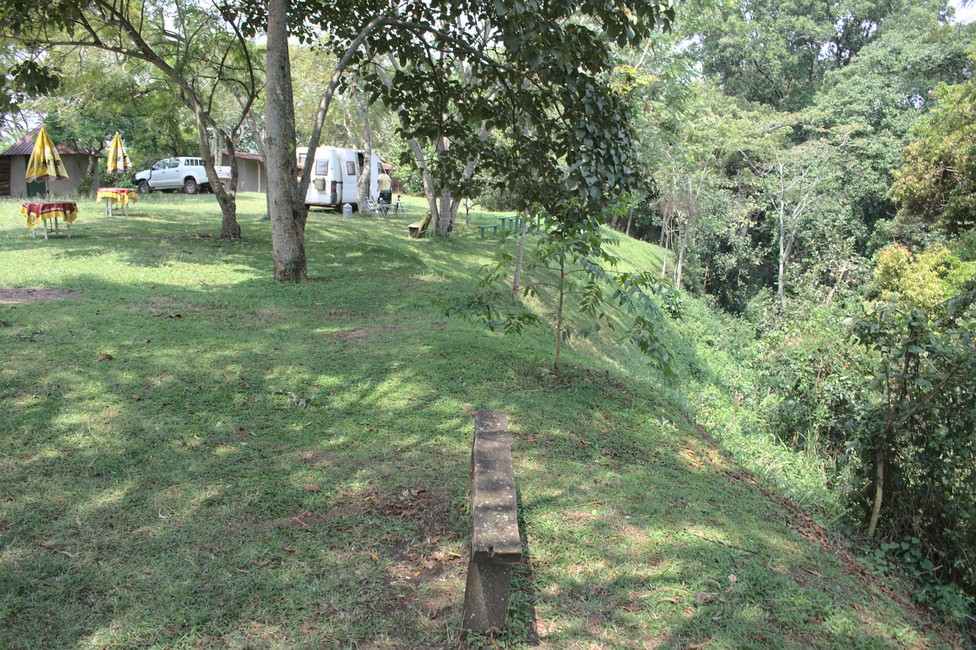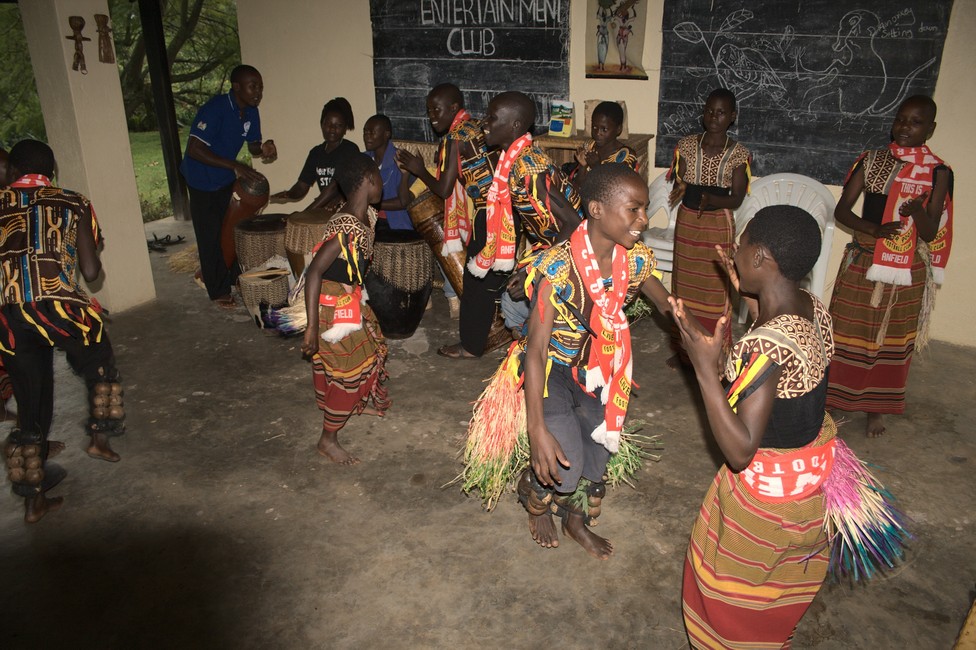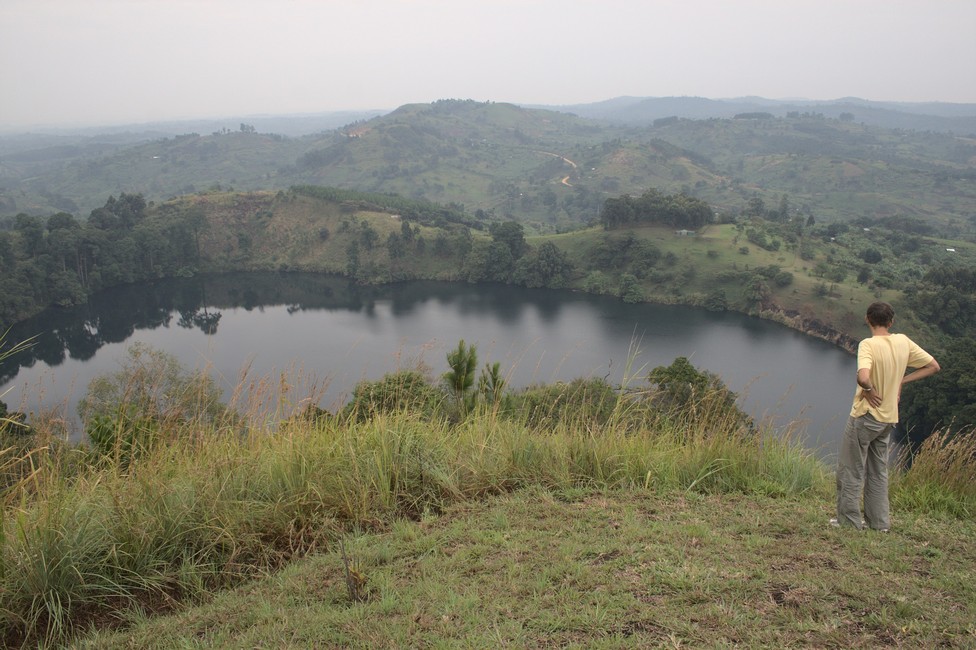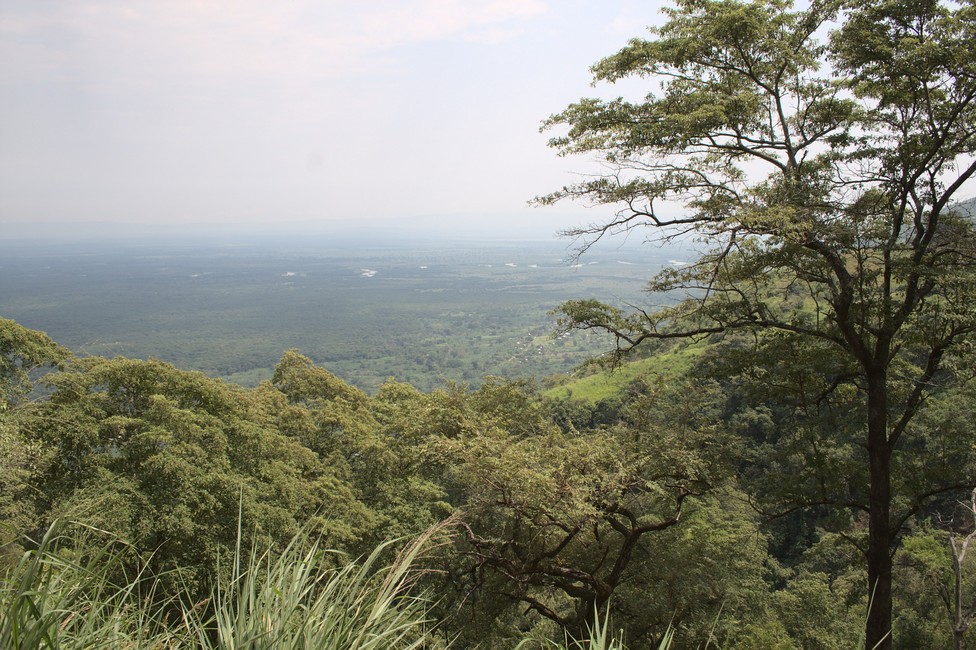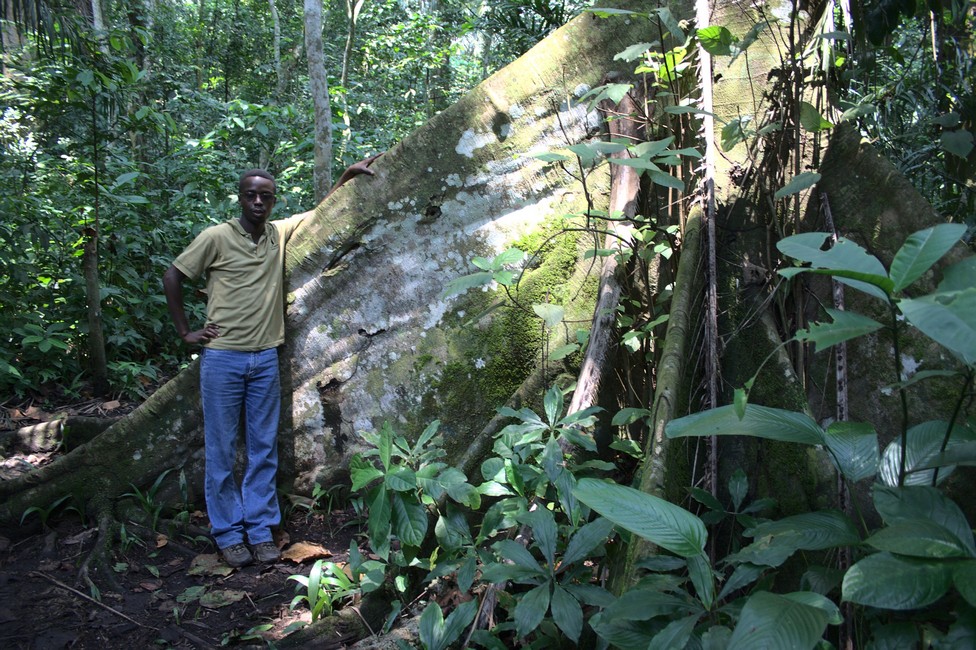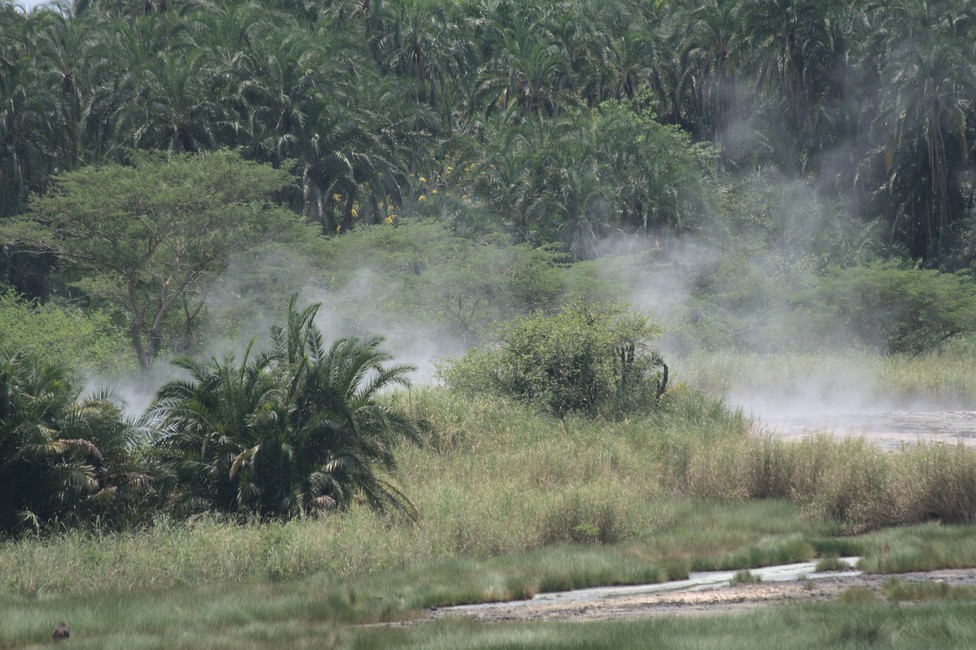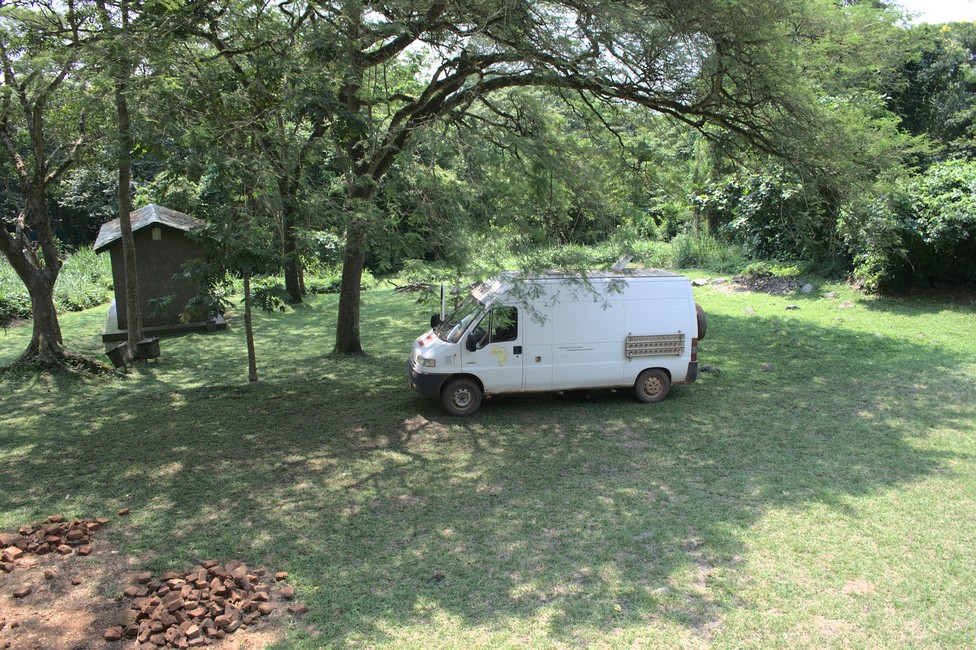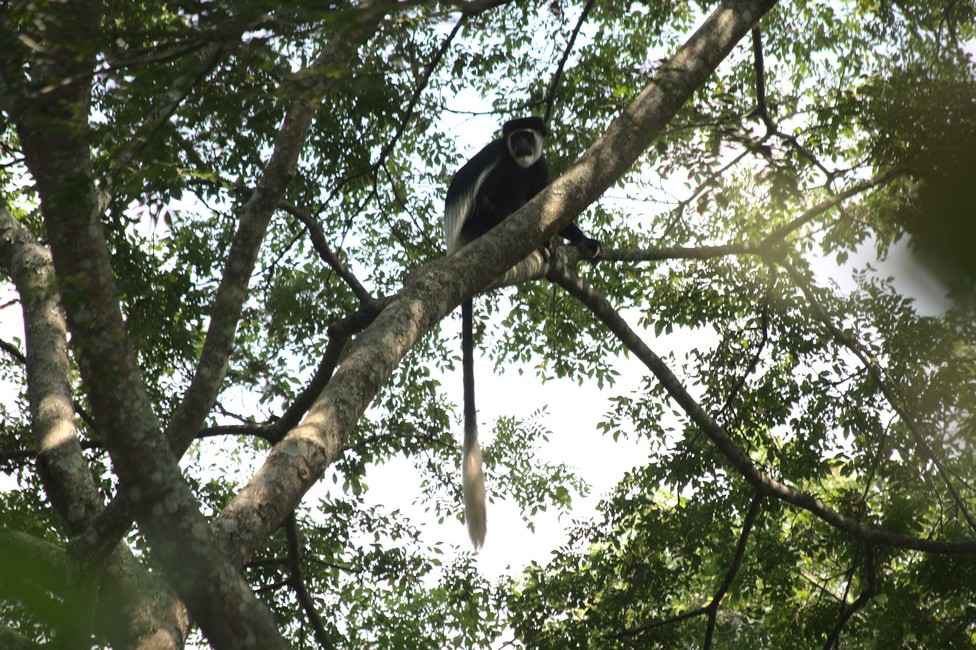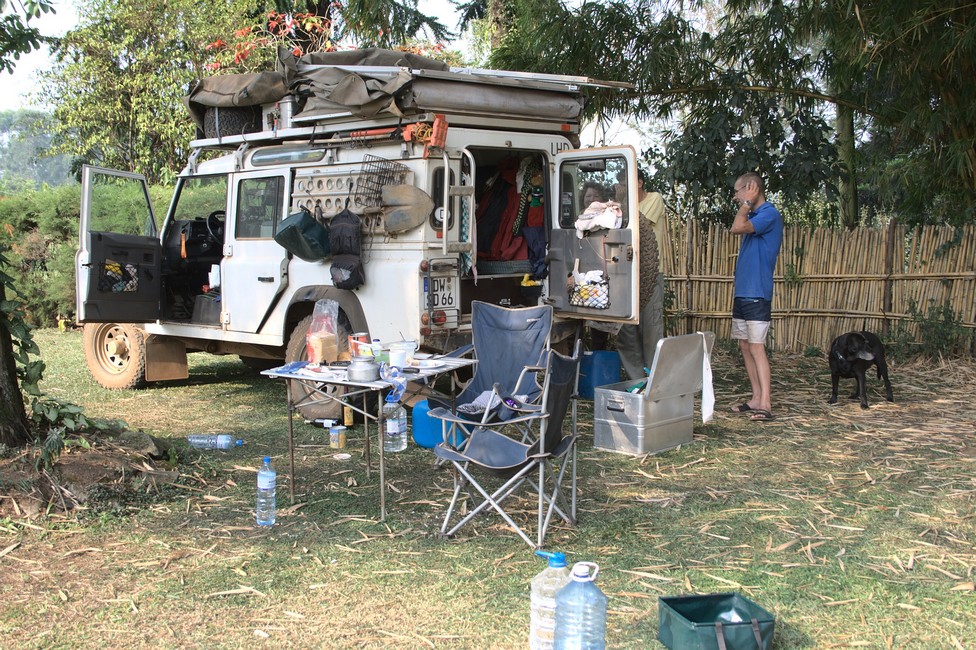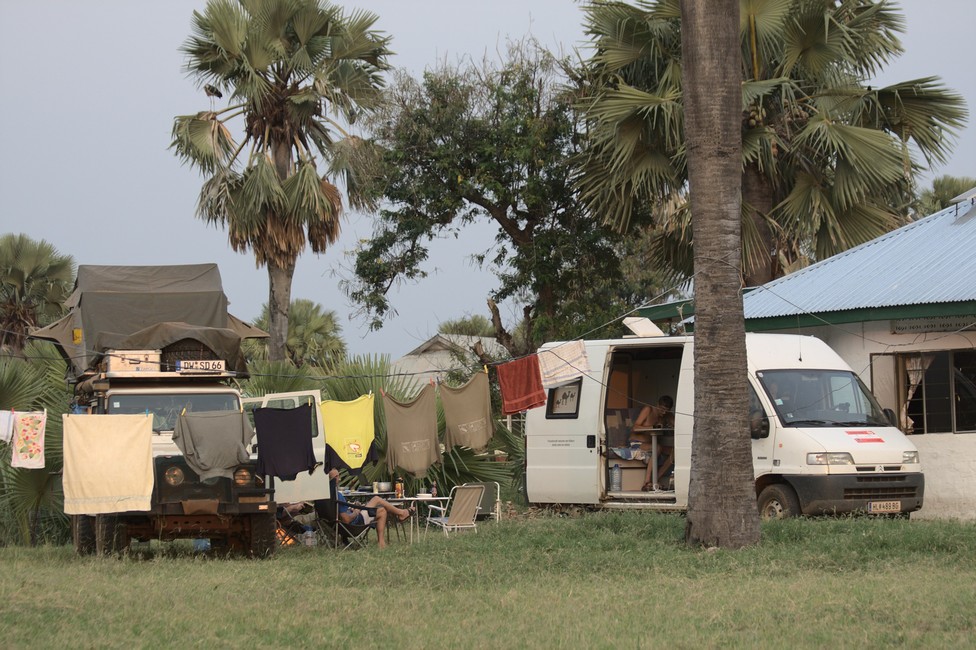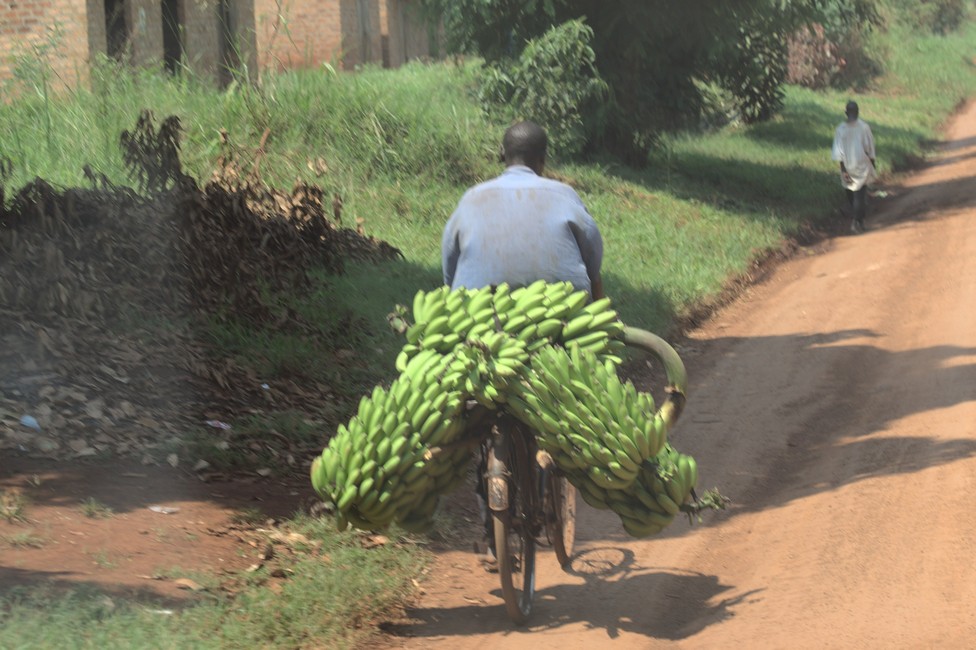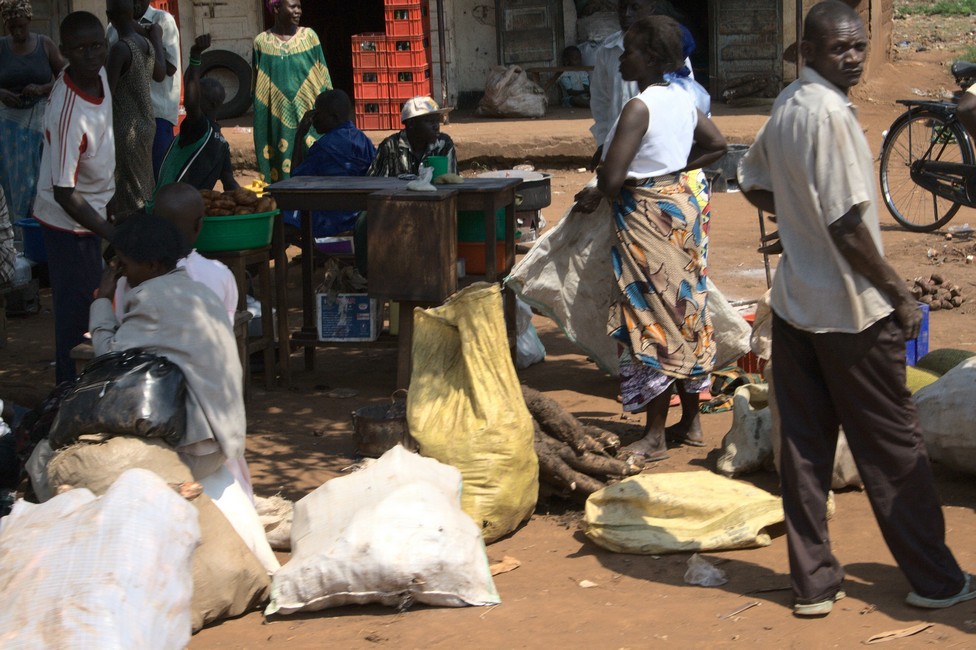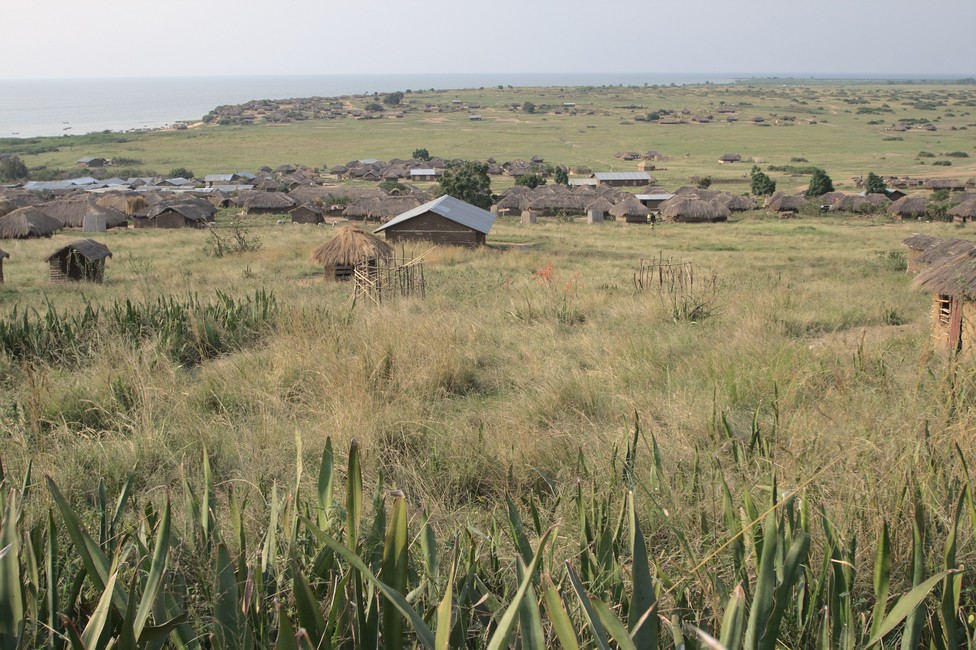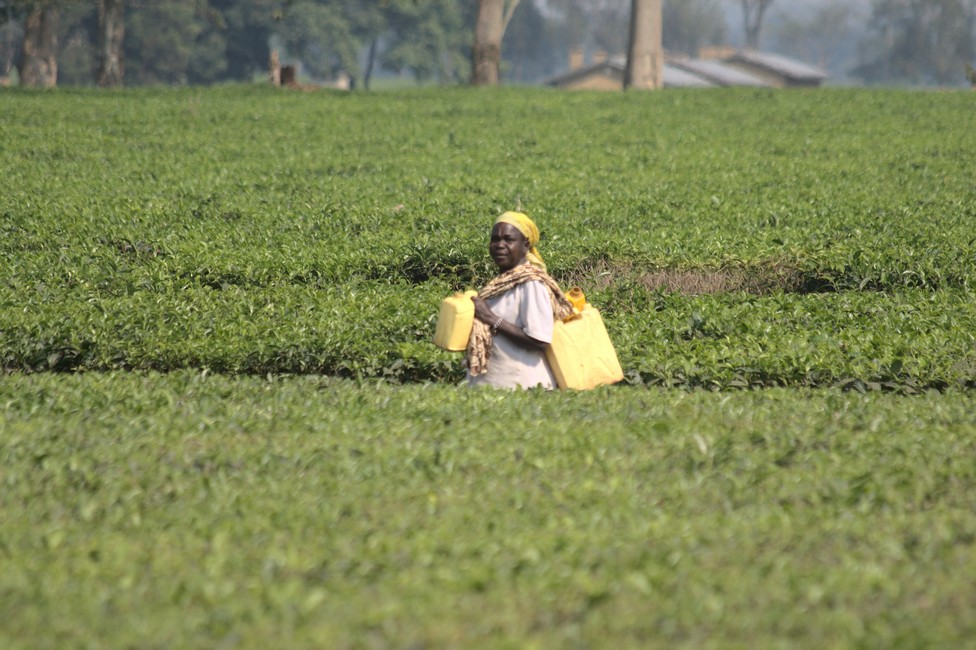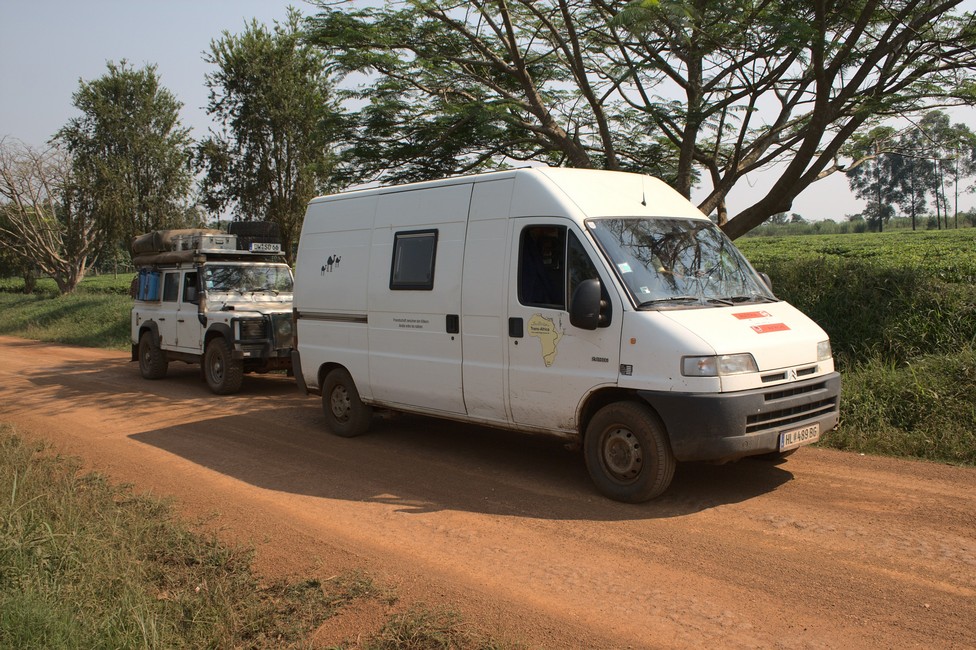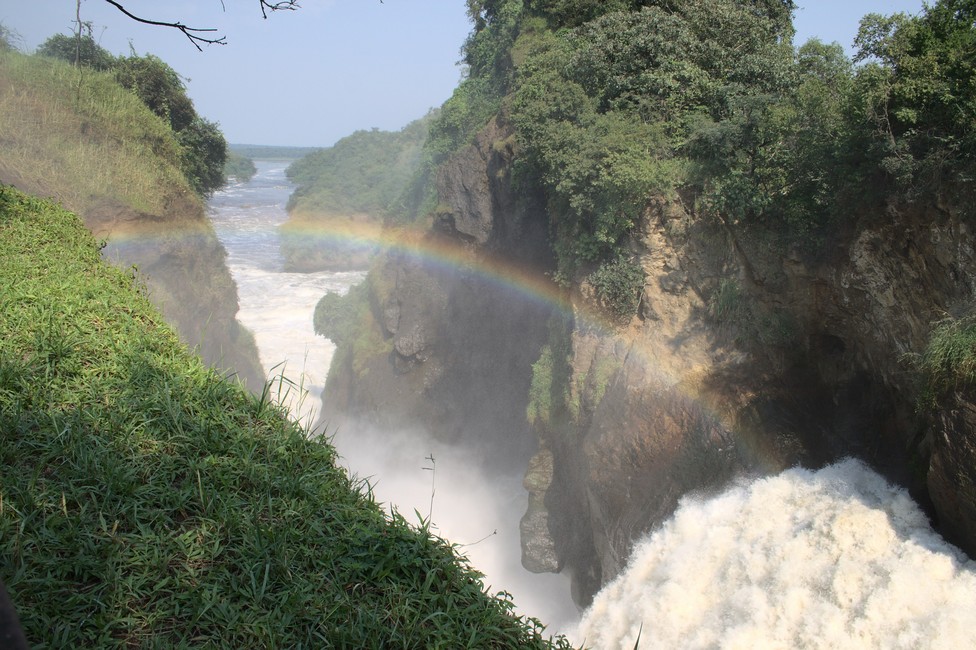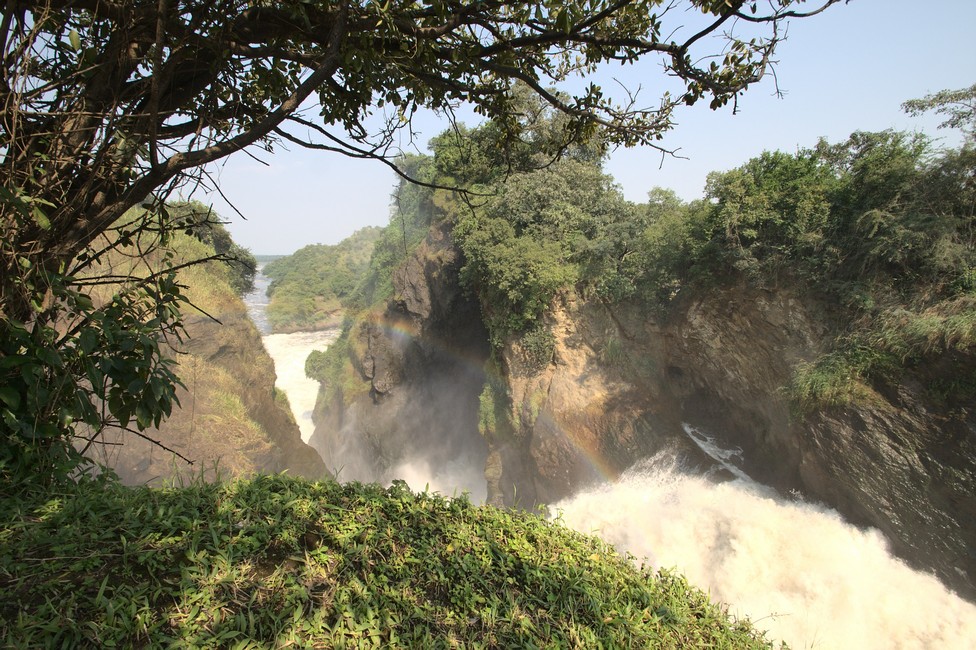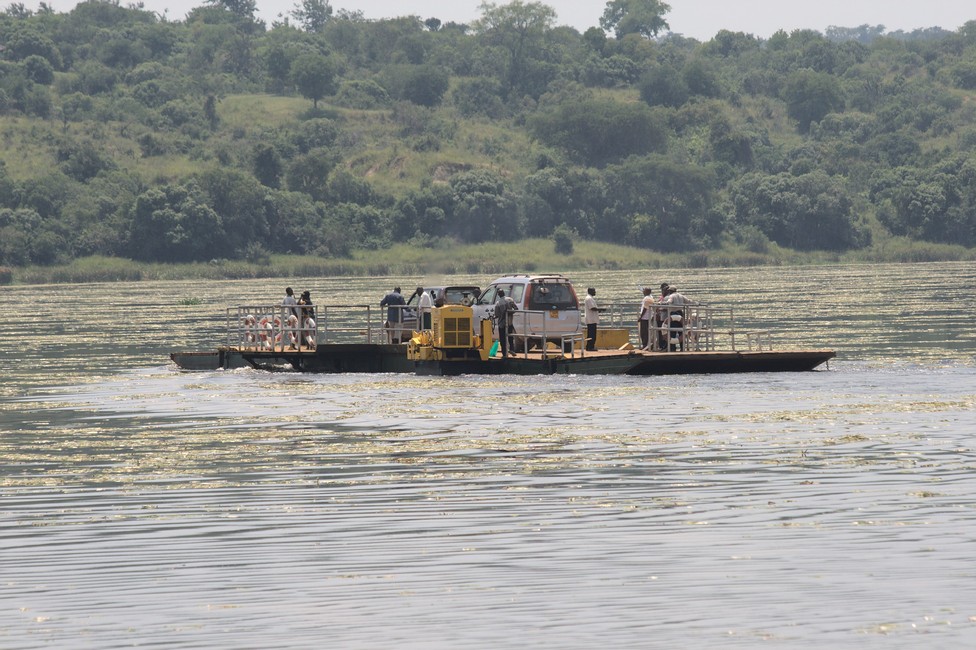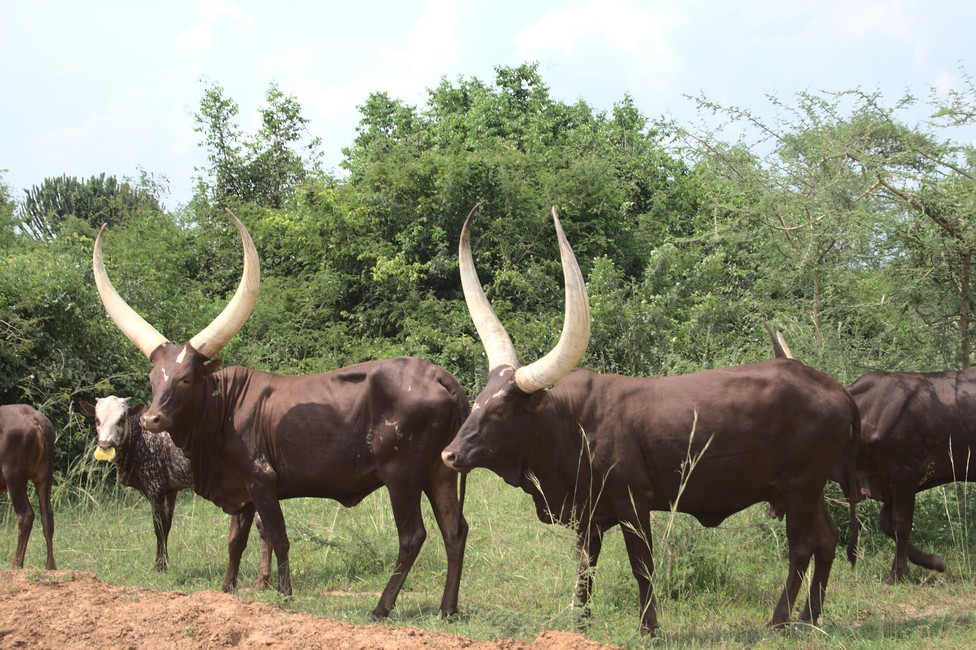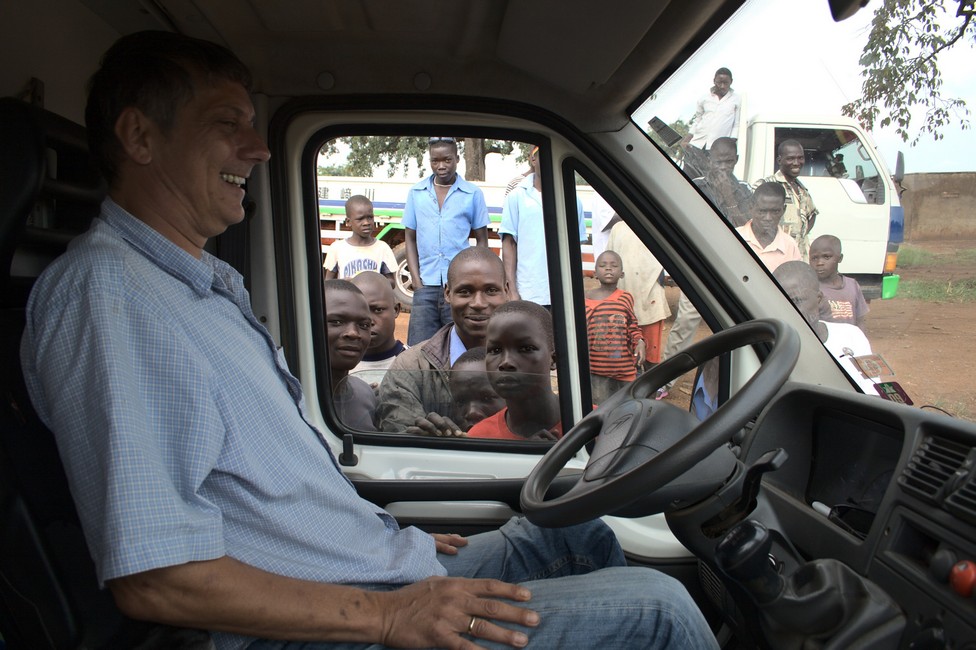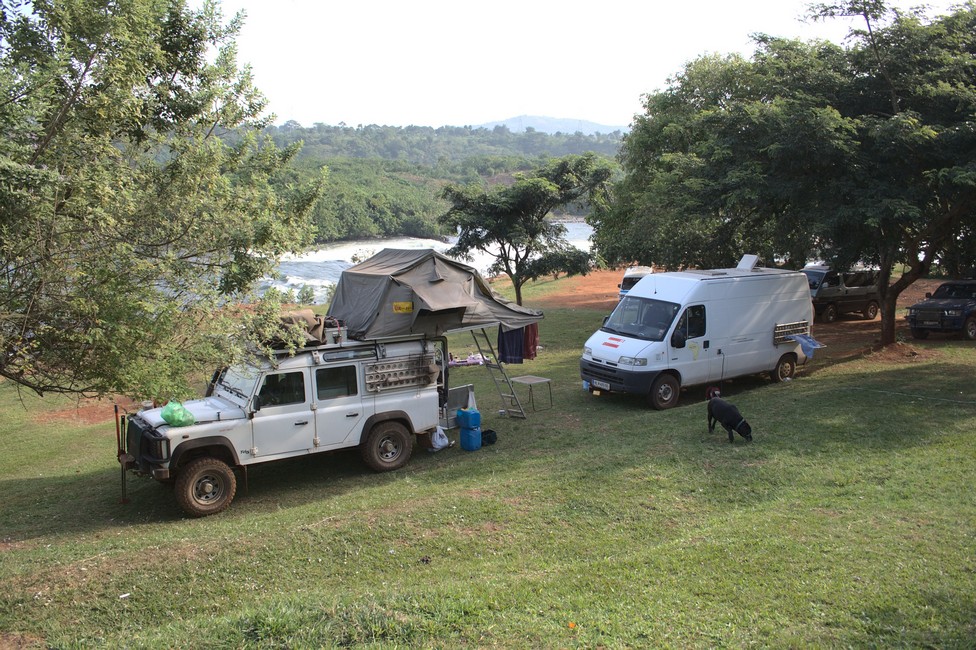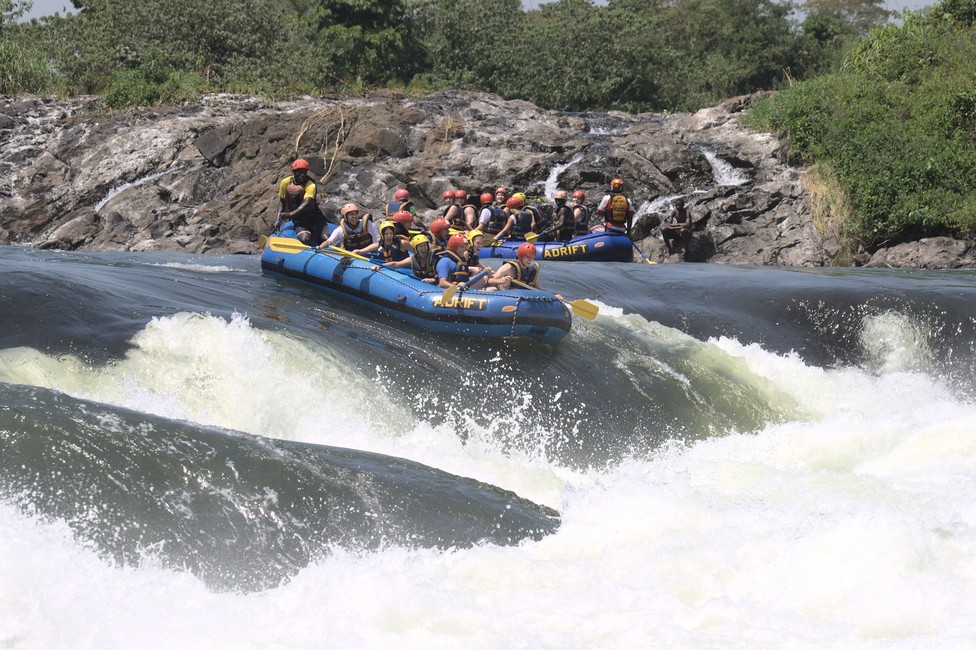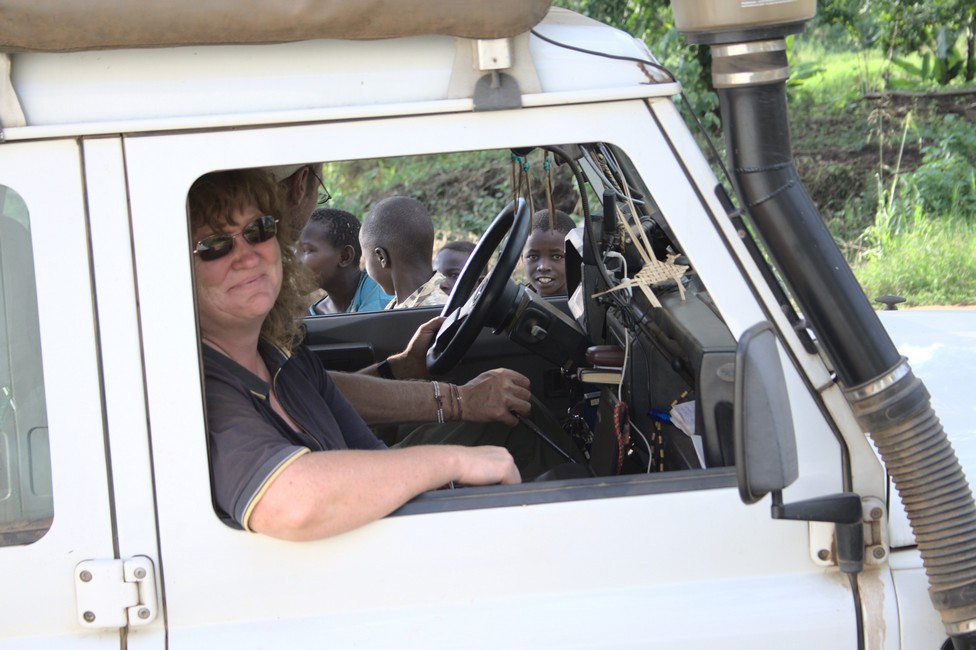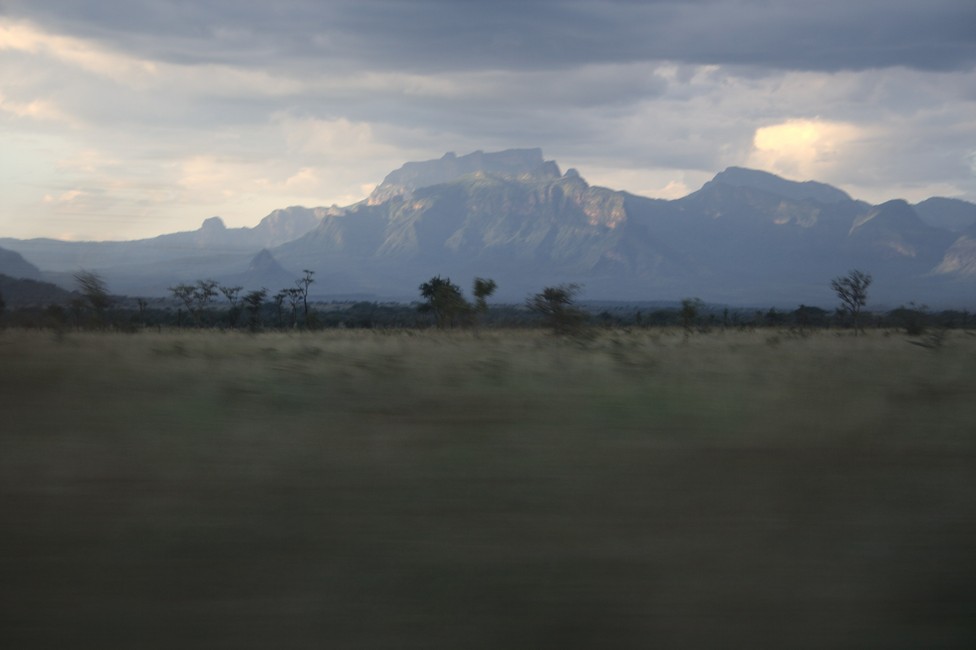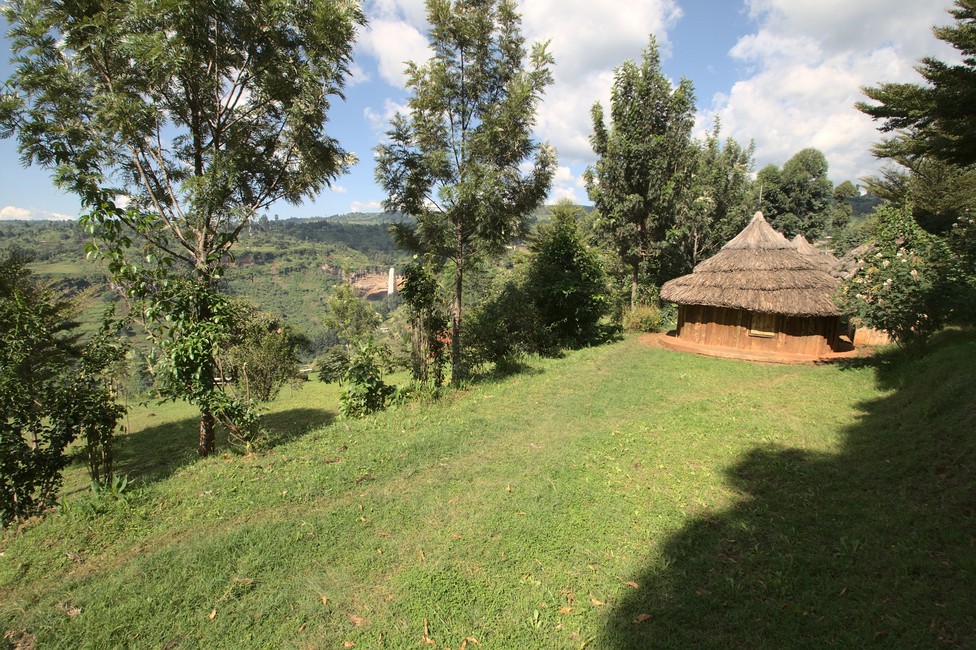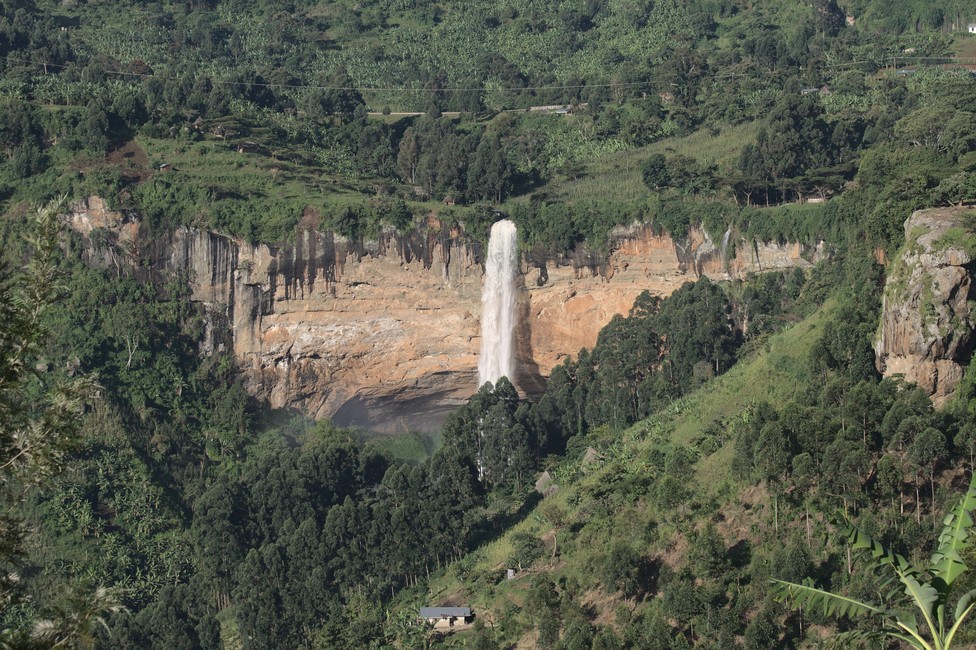We head for Queen Elizabeth National Park. The transport sector in Africa is its own thing. Whether a vehicle is overloaded, no one here is interested. They load all the space available and more, or in other words,it is loaded short before the leaf springs breaks. To optimize matters on the top they pack a few passengers, so that the vehicle is also utilized really well.

What in an emergency brake with the people above would happen, I do not dare to imagine.
We again cross the equator, a plain concrete ring with inscription: “Equator”, marks the spot.
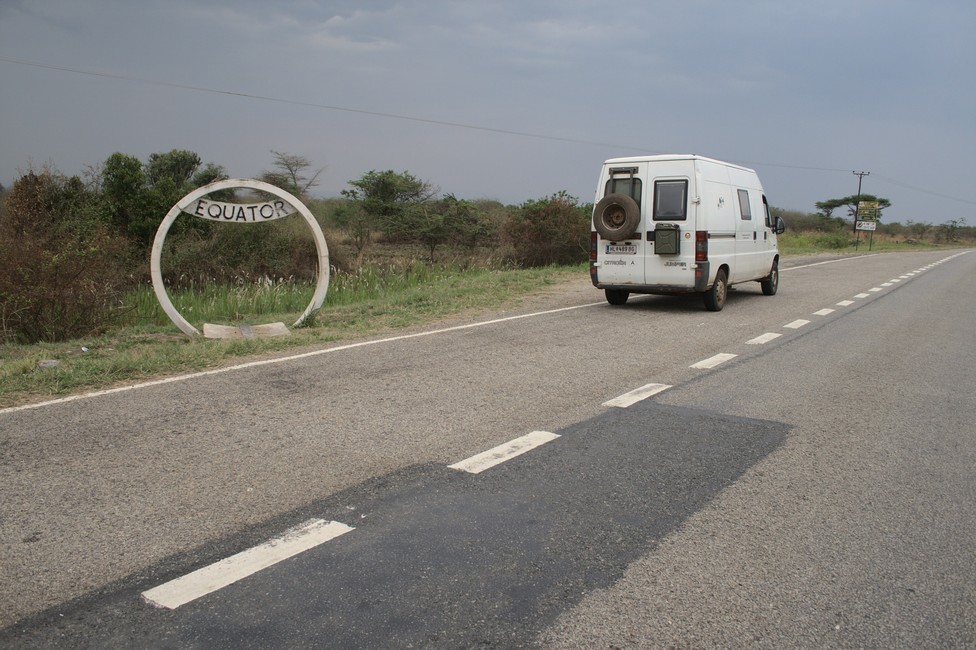
Tara is worried because her mum has moved too far from the van. Or is it the buffalo that concerns her.

A transit route leads through the national park, we turn off onto a dirt road that leads through the park, but we do not have to pay for that road.
We stop at a shallow lake and stay a little bit. Perhaps animals come to its shores. But we have no luck and drive on.

Again and again we see buffalos, a dangerous animal, because if they live in herds and feel disturbed, they circle a vehicle and attack. And then we’re lucky. A herd of elephants with young animals on the roadside.
They march parallel to the road, we follow them slowly. The elephant population in Queen Elizabeth National Park formerly included more than 4,000 animals, but decreased rapidly in the 80ies and shrank to just 200 animals. To date, the stock has recovered to about 3,000 elephants.
But eventually they disappear in the dense shrubbery.
At the roadside a waterbuck. We do not want to scare him, and remain within a reasonable distance. It does not move. We drive closer, but it stays without fear, it is used to cars. And even closer, incredibly, it stays. Now it is almost in reach of our arms. We do not want to confuse and drive on.

We drive to the lake and discover an elephant swimming in the evening twilight. We spend the night at the Hippo Lodge and enjoy a spectacular sunrise. So the morning coffee taste even better.
The Hippo Lodge is located on a hill overlooking the lake. It is not really a lodge, but a tented camp. That means big tents are set up permanently, with beds and bedding, the luxury version even has a bathroom and a toilet. These tents are rented like hotel rooms by safari companies.

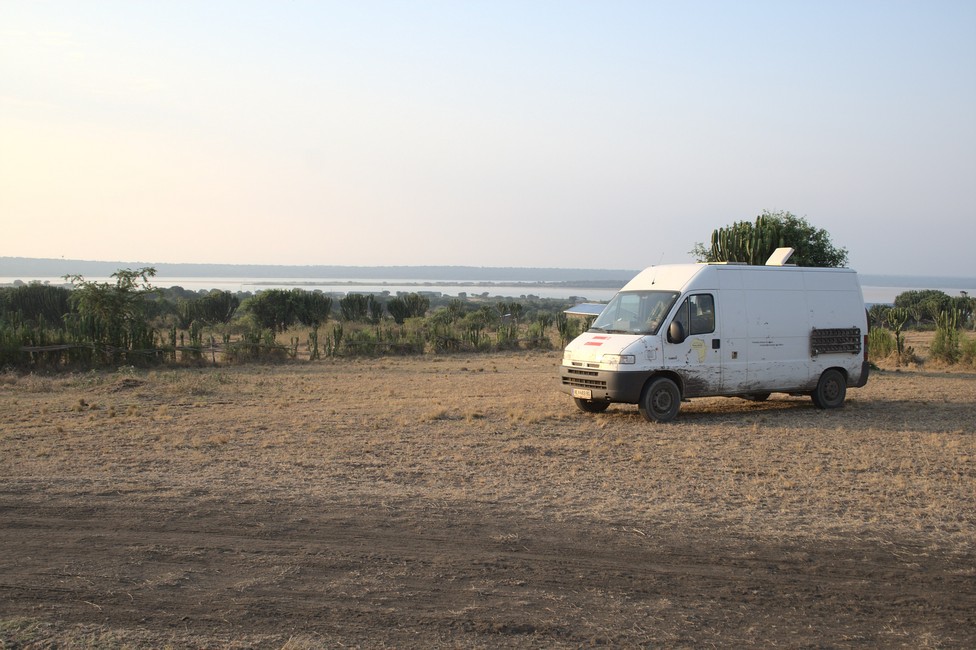
We leave the quiet village early, perhaps we see on the way some animals. The people in the village are also already gotten up, we see little fires burning and hear rattling dishes.
Only some 100 meters outside the village a herd of elephants crossing the road. This is called luck. We stop and watch.
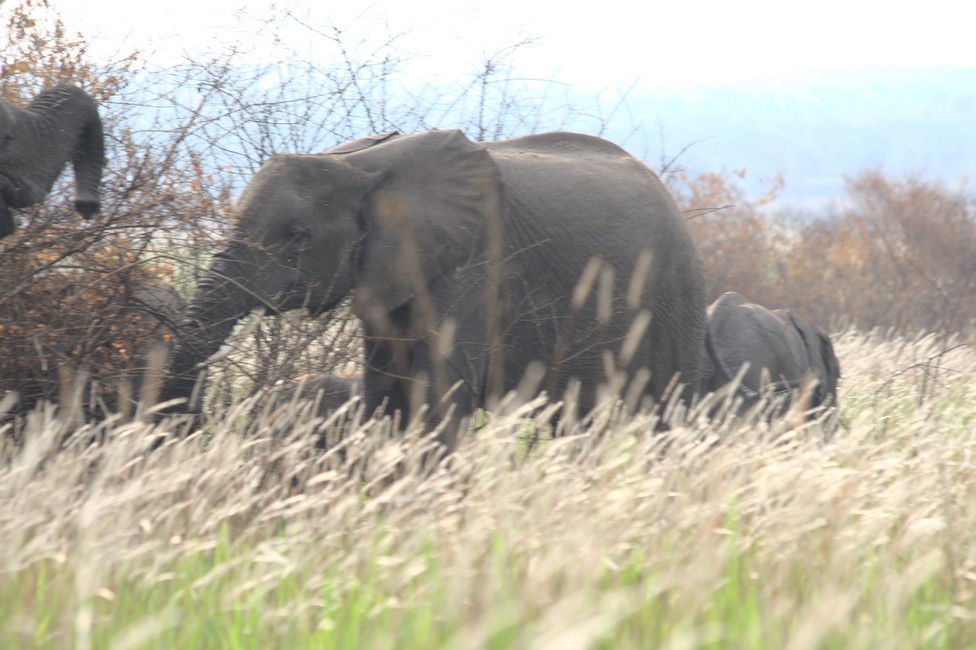
And then, on a hill, we see a strange spectacle. Two young elephants at play. We have never seen that before.
We leave Queen Elizabeth National Park and cross the Kazinga channel that connects Lake Edward with Lake George and divides the park into two parts.
On the edge of the national park on a hill we found a small campsite. Lovingly it is created, with round huts and an open rondavel, from which there is a wide view of the park. Tara is pretty bad, when we walked her in the morning she was close to a bush, so she might have been bitten by a snake or a scorpion or a spider, we do not know, but as she feels really bad we need a vet, either in the capital, Kampala, or must return to Kenya. Tomorrow we will decide where to go.
